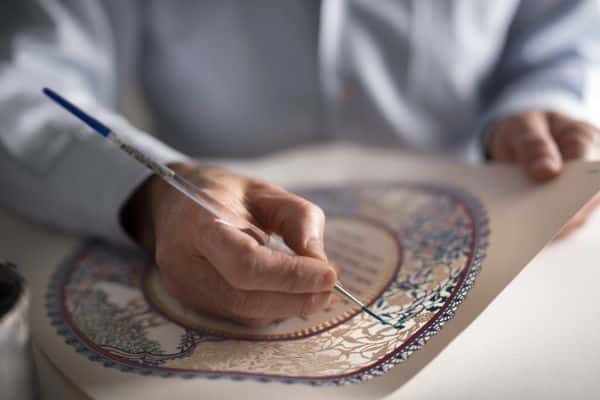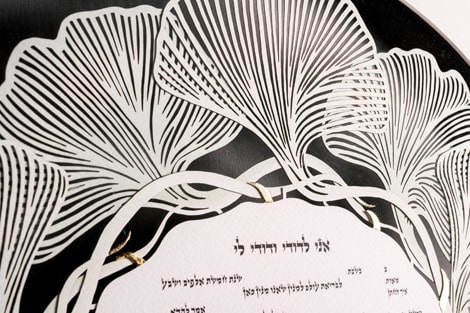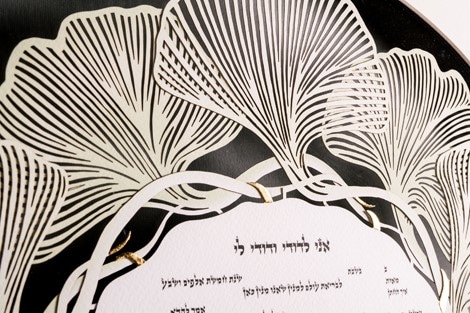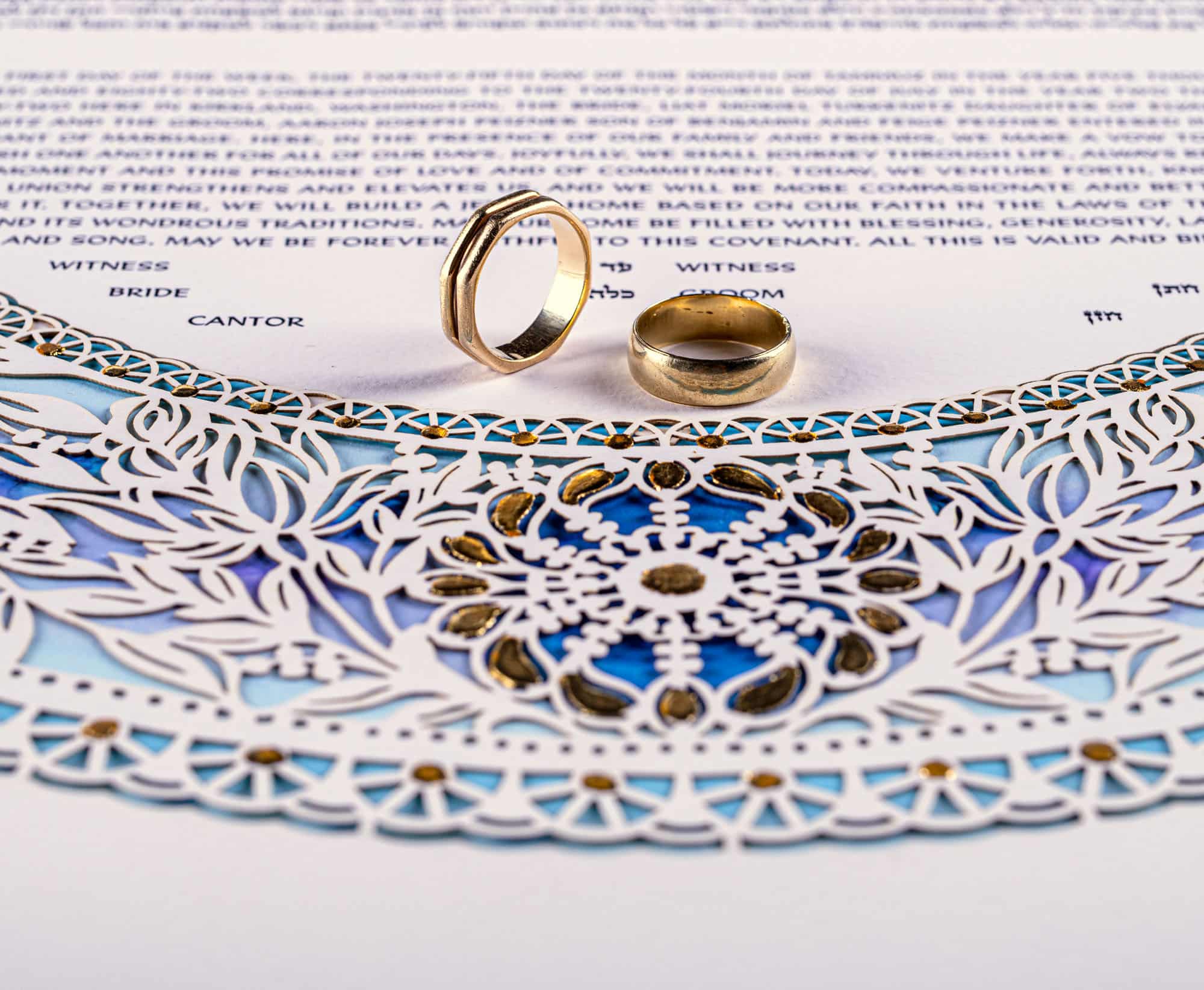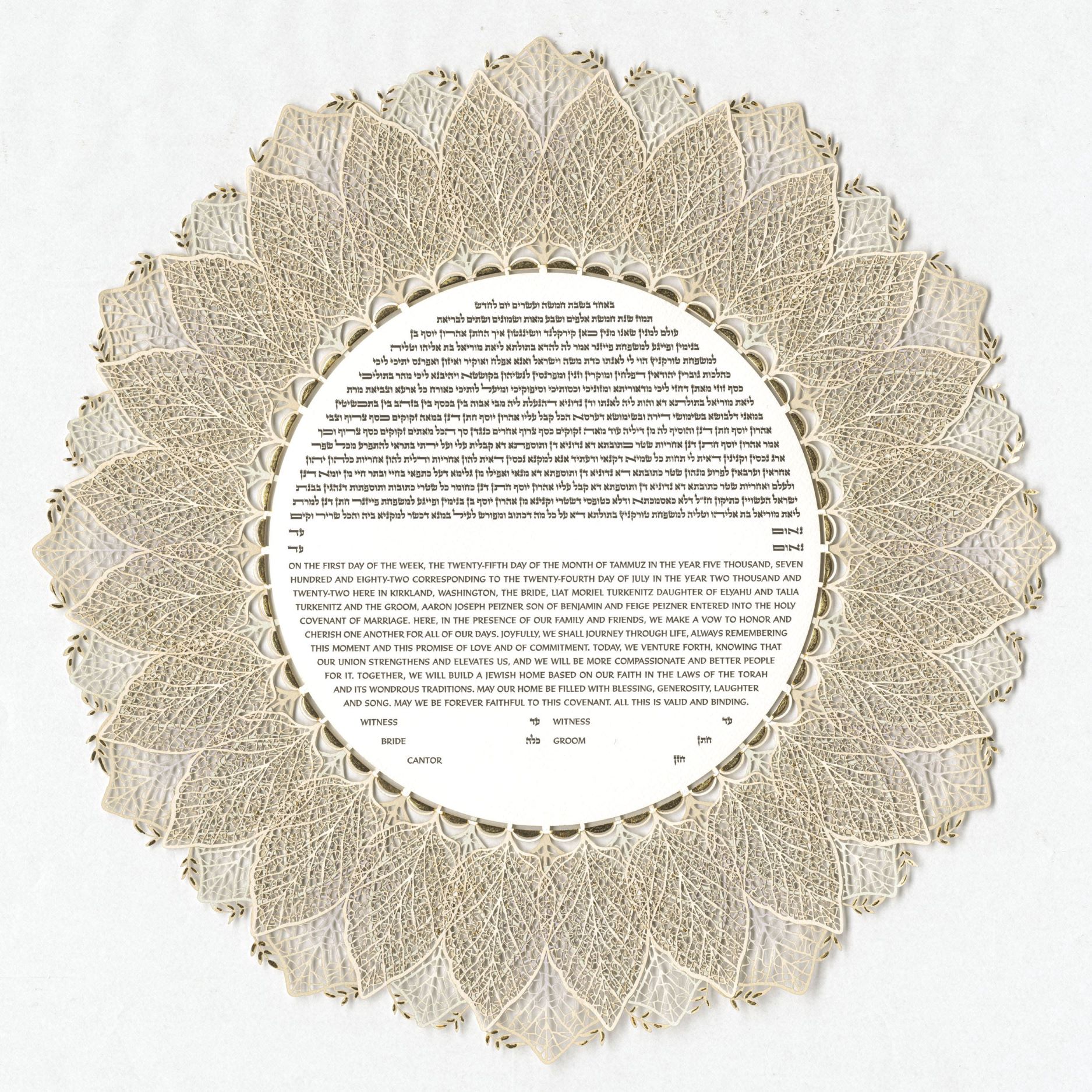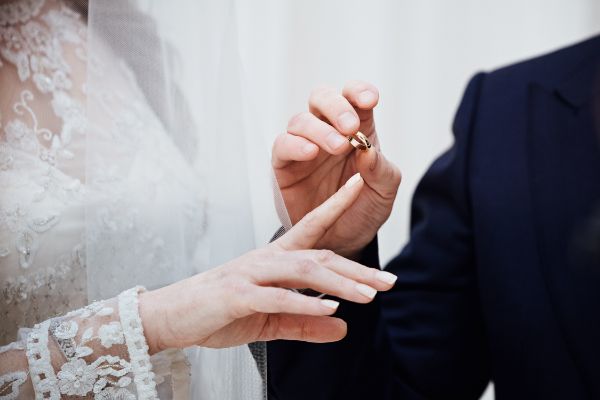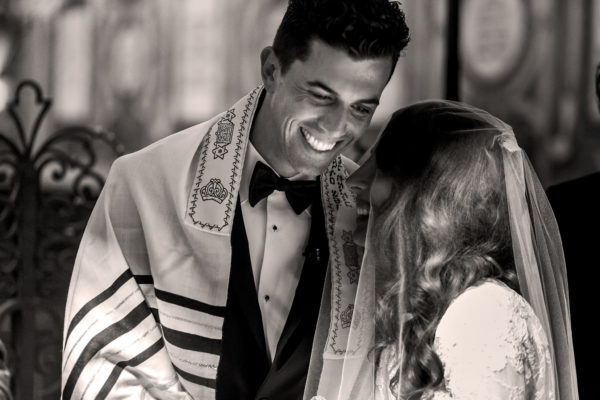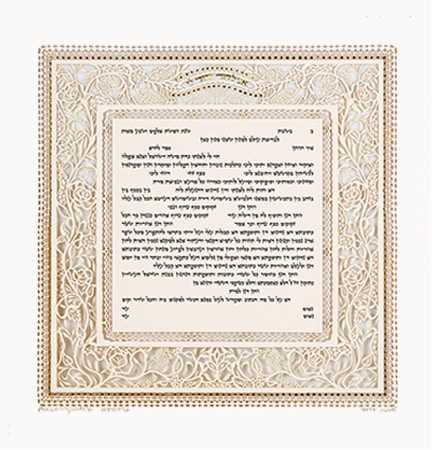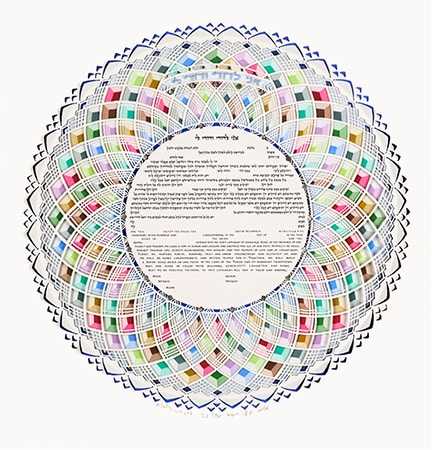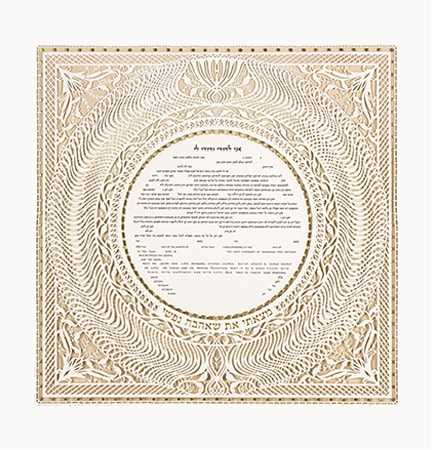5 JEWISH WEDDING TRADITIONS WORTHWHILE KNOWING

So, you’re getting married. The invitations, the guests, the band, the flowers and everything else are ready.
And now for the Jewish wedding traditions…
A traditional Jewish wedding is chock full of rituals. These Jewish wedding traditions are meaningful and celebrate the most momentous day in the lives of the new couple and the building of a Jewish home. A lot of these rituals date back to ancient times. Here are some tips how to combine Jewish wedding traditions with more modernity.
THE KETUBAH
The Ketubah is a Jewish marriage contract, which served as type of prenuptial agreement, protecting a wife’s rights: physical, conjugal and financial support.
Today—Ketubot–following, but differing somewhat from the Jewish wedding tradition– have a wide range of texts to suit the couple’s particular beliefs, taste and lifestyle. Beautifully illuminated and paper cut art ketubahs are available. Among the many ketubah artists is Danny Azoulay a well-known Israeli-based artist, who specializes in finely-detailed paper cut ketubot.
The ketubah is signed before/by witnesses before the ceremony begins and is often read under the chuppah.
BEDEKEN
The Jewish wedding tradition, Bedeken, literally means “covering” in Yiddish. It entails the groom covering the bride with her veil, immediately leading up to the nuptials. This Jewish wedding tradition originates in the biblical story of Jacob who married Leah instead of his intended, Rachel. It is usually a very emotionally charged moment since it is very often the first time the couple gets a glimpse of one another on their wedding day.
CHUPPAH
According to Jewish wedding tradition, the ceremony takes place under a wedding canopy: an intimate, sanctified space. The construction of a chuppah must be a temporary structure made by human hands and symbolizes the bride and groom building a new Jewish home.
Nowadays, a lot of young couples continue this Jewish wedding tradition by designing their own chuppah. It can be created with batik, silk, wool, foliage and other materials. The chuppah is often handheld, by friends or family of the couple’s choosing.
THE SEVEN BLESSINGS
The Seven Blessings embody a significant part of the Jewish wedding tradition, emphasizing the prayers for peace in Jerusalem and good wishes and blessings for the couple.
Today, non-Orthodox couples choose to honor their special guests by asking them to read, sing or recite some of their personal blessings, wishes, poetry or song.
BREAKING OF THE GLASS
One of the most known and loved Jewish wedding tradition is the breaking of the glass.
As the chuppah ceremony comes to an end, the groom stomps on a glass shattering it.
One of the explanations for this is that the glass represents the destruction of the Temple and even in times of great joy– such as a wedding–we should remember the losses withstood by the Jewish people
These days, couples most often share the honor, shattering one or two wrapped glasses together to the happy cries of “Mazel Tov”.

